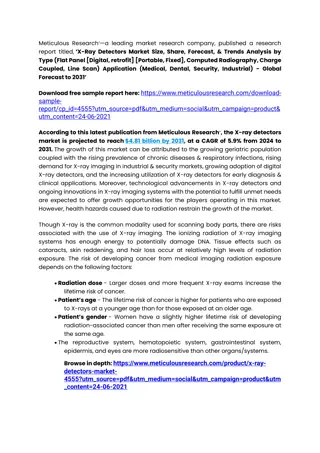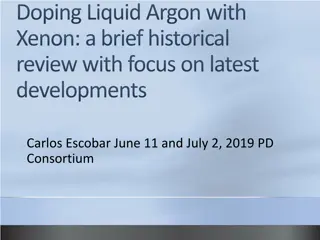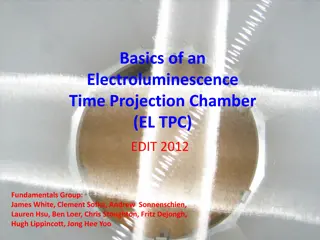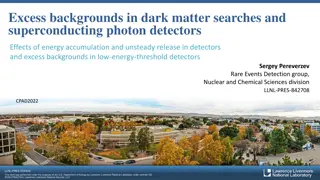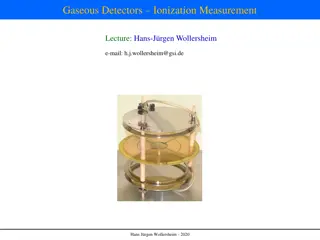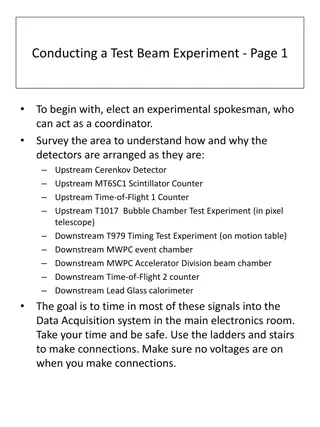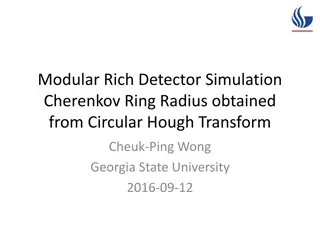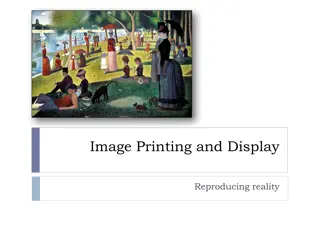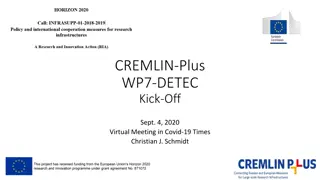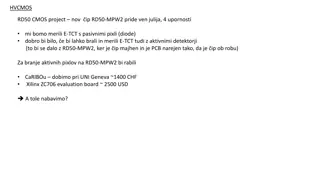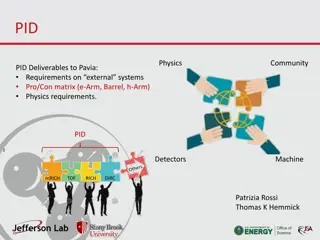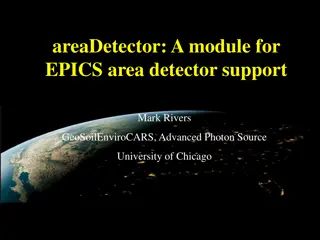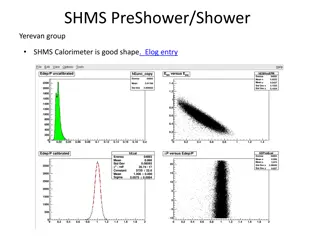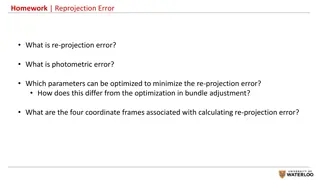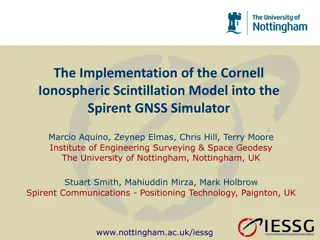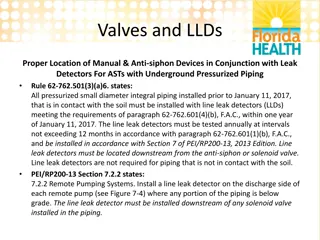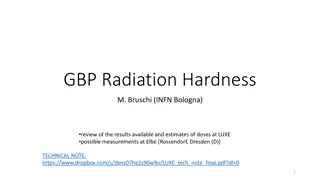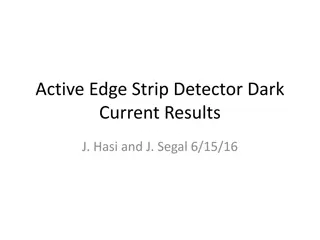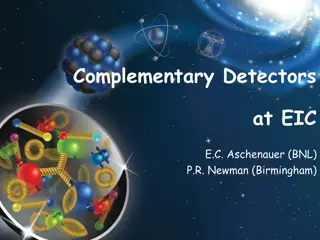Innovations in Pixel Detector Technology for Photon Science
Technologies and advancements in pixel detector development for photon science applications are showcased in this content. Topics discussed include balancing gain and dynamic range in hybrid pixel detectors, performance assessments of integrating pixel detectors, and strategies for photon detection
4 views • 21 slides
asia pacific x ray detecter
X-ray detectors are devices or systems used to capture and record X-ray images for medical, industrial, scientific, or security purposes. They are essential tools for visualizing the internal structures of objects and organisms through the use of X-ray radiation. X-ray detectors are used in a variet
1 views • 3 slides
Are you ready to take your business to the next level? Check out Maven Group
Elevate your brand with a stunning website that reflects your vision. Our team at Maven Group Global is dedicated in bringing your ideas to life, pixel by pixel. Let's build an online home for your brand together.
0 views • 2 slides
xray detecter
X-ray detectors are devices or systems used to capture and record X-ray images for medical, industrial, scientific, or security purposes. They are essential tools for visualizing the internal structures of objects and organisms through the use of X-ray radiation. X-ray detectors are used in a variet
1 views • 2 slides
Search for Dark Photons Utilizing Advanced Germanium Detectors at University of South Dakota
Research at the University of South Dakota under the collaboration PIRE-GEMADARC focuses on developing advanced germanium detectors with low energy thresholds for detecting low mass dark photons. The study aims to optimize event detection using new Ge detectors with internal charge amplification. Th
0 views • 16 slides
Analysis of Epi/Stroma Segmentation with High Pixel Agreement Rates
In this analysis of Epi/Stroma segmentation, multiple images were evaluated, showing overall pixel agreement rates ranging from 0.9211 to 0.9625. True Positive Rates were high, while False Negative Rates varied. The study provides insights into the effectiveness of the segmentation process.
0 views • 10 slides
Understanding Pixel Relationships in Image Processing
Exploring the fundamental concepts of pixel relationships in image processing, including 4-neighbors, 8-neighbors, adjacency criteria, and their significance in digital image analysis. The content covers the basics of pixel connectivity and neighbor sets, offering insights into how pixels interact a
2 views • 67 slides
Pixel Array Status and Drawing Rules for High-Resistivity Epi Design
This collection of images and descriptions provides an overview of the pixel array status as of April 26, 2019, along with drawing rules for high-resistivity epi design. The pixel array features various components such as Pixel_S1, Pixel_S3, and the overall array structure. Drawing rules highlight t
4 views • 9 slides
Insights from ET-ISB Workshop on Low-Frequency Noise and GWADW 2021
The ET Instrument Science Board held a workshop focusing on addressing key challenges related to low-frequency noise in gravitational wave detectors. Experts discussed topics such as mirror temperature, dealing with low-frequency noise realities, and facility limits. The workshop highlighted the sig
0 views • 13 slides
Advanced Fission Experiments at University of Michigan
The University of Michigan, under the guidance of Dr. Sara A. Pozzi, conducts cutting-edge fission experiments leveraging organic scintillation detectors. These detectors offer advantages such as nanosecond-scale response times, energy proportionality, and scalability. The experiments focus on impro
0 views • 4 slides
Advances in Optical Bench Technology for Gravitational Wave Detectors
This content discusses the latest advancements in optical bench technology for gravitational wave detectors, focusing on precise measurements of back-scattered light, development of new optical cavities, and testing of Sagnac interferometers. Key objectives include improving suspension controls, red
0 views • 13 slides
Advancements in Doping Liquid Argon with Xenon: Historical Overview
Delve into the historical review and latest developments of doping liquid argon with xenon, aiming to shift light wavelengths for improved visibility in TPC volumes. Key questions address the effect on scintillation components, stability of xenon doping, and potential ice cluster formation. Early st
0 views • 27 slides
Understanding Electroluminescence Time Projection Chamber (EL TPC) Physics
Delve into the fundamentals of Electroluminescence Time Projection Chambers (EL TPCs) through concepts like electron drift, scintillation mechanisms in noble gases, and charge yield estimation. Explore the workings of EL TPC prototypes, such as ZEPLIN II/III and DarkSide, for applications like react
0 views • 23 slides
Neutrino Detectors for NuStorm: Physics Goals and Detector Requirements
Physics goals for neutrino detectors in the NuStorm project include measuring exclusive neutrino cross sections, supporting long baseline programs, searching for sterile neutrinos, and improving measurements. Detector requirements involve reconstructing neutrino interactions, providing charge and pa
0 views • 21 slides
Advancements in Pixel Readout R&D for Large Liquid Argon Time-Projection Chambers
Explore the latest developments in pixel readout research and development for large liquid argon time-projection chambers (LArTPCs) presented by Dan Dwyer at the CYGNUS Collaboration Meeting. Learn about signal characteristics, wire signal ambiguity, challenges in true 3D readout, and the innovative
0 views • 13 slides
Insights into Excess Backgrounds in Dark Matter Searches and Energy Accumulation Effects in Detectors
Explore the impact of excess backgrounds in dark matter searches, energy accumulation, and unsteady releases in detectors. Delve into the implications on low-energy-threshold detectors and the emergence of complex effects in various detector types due to energy accumulation and delayed releases.
3 views • 23 slides
Insights into Gaseous Detectors for Ionization Measurement
Delve into the world of gaseous detectors for ionization measurement, as discussed by Hans-Jürgen Wollersheim. Topics include the Bethe-Bloch formula, ionization detectors, effective ionization energies, charge transport in gas, ion mobility, and electron mobility in gases. Explore concepts such as
2 views • 29 slides
Conducting a Test Beam Experiment - Step-by-Step Guide
In this step-by-step guide, you will learn how to set up and conduct a test beam experiment. The experiment involves connecting detectors such as Cerenkov Detectors, Scintillator Counters, Bubble Chambers, and more. The process includes handling signal cables, high voltage connections, and checking
1 views • 5 slides
Cherenkov Ring Radius Determination from Modular Rich Detector Simulation
Explore the process of obtaining the Cherenkov ring radius using Circular Hough Transform in a modular rich detector simulation. The study, conducted by Cheuk-Ping Wong from Georgia State University, delves into Monte Carlo results, ring finder algorithms, event displays, and radius distributions in
0 views • 20 slides
Understanding Image Display and Halftoning Techniques
Images are reproduced for display on various devices like televisions, computer monitors, and newspapers with specific characteristics such as pixel shape, spatial resolution, and color depth. Issues with display devices, such as pixel resolution and color depth, affect fidelity. Halftoning methods,
3 views • 44 slides
WP7-DETEC Kick-Off Meeting: Advancing Detector Technologies for Particle Physics
WP7-DETEC is a collaborative initiative focusing on the development of state-of-the-art detector technologies in the fields of nuclear physics and high-energy physics. The kick-off meeting aims to foster cooperation, exchange ideas, and educate young scientists in the field. Activities include sessi
0 views • 7 slides
The Sound Pixel Project: Innovative Audio Design and Implementation
Explore the Sound Pixel Project, a cutting-edge initiative showcasing a transportable and easily constructed frame design concept utilizing lightweight aluminum alloy composite framing. With a focus on independent sound emitters and six sets of stereo speakers, the project also delves into music mix
0 views • 6 slides
Advanced Technologies for Particle Detection and Monitoring
Cutting-edge technology such as HVCMOS RD50-CMOS project along with CaRIBOu and Xilinx ZC706 evaluation board are being employed for precise measurements in E-TCT with passive and active pixel detectors. The development of Radiation Monitor Sensor Boards for ITk, involving sensors like RadFETs and d
0 views • 6 slides
PID Physics Community Deliverables to Pavia: Requirements and Developments
Requirements and developments of external systems and detectors (e-Arm, Barrel, h-Arm) for PID Physics Community to Pavia are detailed. The deliverables include Pro/Con matrices, physics requirements, and advancements in detectors such as mRICH, TOF, RICH, and DIRC. Various simulation results, advan
0 views • 13 slides
Advances in Experimental Particle Physics and Metrology Technologies
This collection of images and text highlights the essential aspects of fundamental physics experiments, particle physics detectors, and the Atlas ITk project. It also focuses on the importance of metrology for physics and satellite experiments, with a specific emphasis on laser technologies. The con
0 views • 11 slides
Understanding K-means Clustering for Image Segmentation
Dive into the world of K-means clustering for pixel-wise image segmentation in the RGB color space. Learn the steps involved, from making copies of the original image to initializing cluster centers and finding the closest cluster for each pixel based on color distances. Explore different seeding me
0 views • 21 slides
Understanding EPICS areaDetector Module for Advanced Photon Source at University of Chicago
This content delves into the areaDetector module for EPICS, supporting various detectors used in research settings like synchrotron beamlines. It covers the motivation, goals, architecture, data structures, and detector drivers involved, emphasizing the versatility, efficiency, and support provided
0 views • 35 slides
Updates on Calorimeter and Cherenkov Detectors in Yerevan Group's SHMS and HMS
Check out the latest updates on the calorimeter and Cherenkov detectors of Yerevan Group's SHMS and HMS. The SHMS detectors are in good shape, while adjustments in HV are needed for the HMS Cherenkov detectors to achieve optimal performance. Images and descriptions are provided in the Elog entries.
0 views • 6 slides
Understanding Spatial Error in Photogrammetry
Reprojection error in photogrammetry refers to the discrepancy between a known point in a scene and its projected position on an image. Photometric error, on the other hand, involves errors related to pixel intensity values. To minimize reprojection error, parameters such as camera intrinsics, extri
0 views • 5 slides
Summary of ITk Pixel Status Reports and Organization Updates
The content provides updates from ITk Pixel Status Reports on project transitions, decision-making processes, organizational structure, and key focus areas. It also outlines responsibilities, strategic planning, and critical items to address within the project timeline. The Planning section outlines
0 views • 24 slides
Implementation of Cornell Ionospheric Scintillation Model in Spirent GNSS Simulator
Researchers from the University of Nottingham and Spirent Communications collaborated to implement the Cornell Ionospheric Scintillation Model into the Spirent GNSS Simulator. The study focuses on the diffractive effects of ionospheric scintillation on GNSS signals, examining small-scale plasma irre
0 views • 24 slides
Proper Installation of Valves and Leak Detectors for Pressurized Underground Piping
According to Florida administrative code rule 62-762.501(3)(a)6., all pressurized small diameter integral piping in contact with soil must have line leak detectors installed within one year of January 11, 2017. These detectors should be downstream from the anti-siphon or solenoid valve and tested an
0 views • 4 slides
Progress Update on Phase-2 CMS Pixel R&D Activities in Italy by Marco Meschini
Marco Meschini presents updates on Phase-2 CMS Pixel R&D activities in Italy. Updates include sensor production, wafer batches funded, thinning processes, bump bonding technologies, and irradiation campaigns. The meeting discusses wafer specifications, Epi wafer procurement challenges, and productio
0 views • 28 slides
Detector Assembly and Cryogenics Requirements for ILD Project
The ILD project involves assembling detectors using pre-assembled pieces on surface and lowering them into the assembly area. The detectors are equipped with various components like muon detectors, solenoids, and calorimeters. Magnetic field measurements are carried out during the assembly process.
0 views • 11 slides
Advancements in Sapphire Detectors for Radiation Hardness Testing and High-Energy Physics Experiments
Reviewing radiation hardness testing, dose estimates, and measurements at LUXE, this content delves into the use of sapphire detectors in high-energy physics experiments. Highlighting sapphire's material properties, such as high radiation resistance, low cost, and specific characteristics, the text
0 views • 13 slides
Update on Pixel and IBL Detectors for Run 2 at CERN
Publications and plot approvals for the IBL paper are in review stage, with updates requested for the author list. Various proceedings and notes are being prepared, including a 4-layer pixel paper proposal focusing on LS1 work and early beam results. Plans for mid-2015 include beam splashes validati
0 views • 12 slides
Comparative Study of Different Strip Detectors for Dark Current Results
Explore various strip detectors including old baseline, extra-distance, and guard ring surrounding detectors through images showing pixel current behavior when biased. The study highlights the impact of guard ring presence on lowering pixel current in these detectors.
0 views • 6 slides
Complementary Detectors for High-Luminosity Experiments
The work discusses the need for high luminosity at full acceptance in accelerator experiments, outlining boundary conditions and requirements for detectors. Various images illustrate the integration of experimental equipment in the IR, highlighting the structure and components of central detectors.
0 views • 13 slides
Performance of Scintillation Pixel Detectors with MPPC Read-Out and Digital Signal Processing
Mihael Makek presents the performance evaluation of scintillation pixel detectors with MPPC read-out and digital signal processing at the 2nd Jagiellonian Symposium on Fundamental and Applied Subatomic Physics in Krakow, 2017. The study includes the construction and testing of segmented detector arr
0 views • 25 slides
Thermomechanical Analysis of Pixel-Hybrid Module by Leonardo Ribeiro
The thermomechanical analysis of the pixel-hybrid module conducted by Leonardo Ribeiro explores the challenges faced due to cycling between 213 K and room temperature, emphasizing the impact of different thermal expansion coefficients on the structure. The study involves a detailed examination of th
0 views • 19 slides


